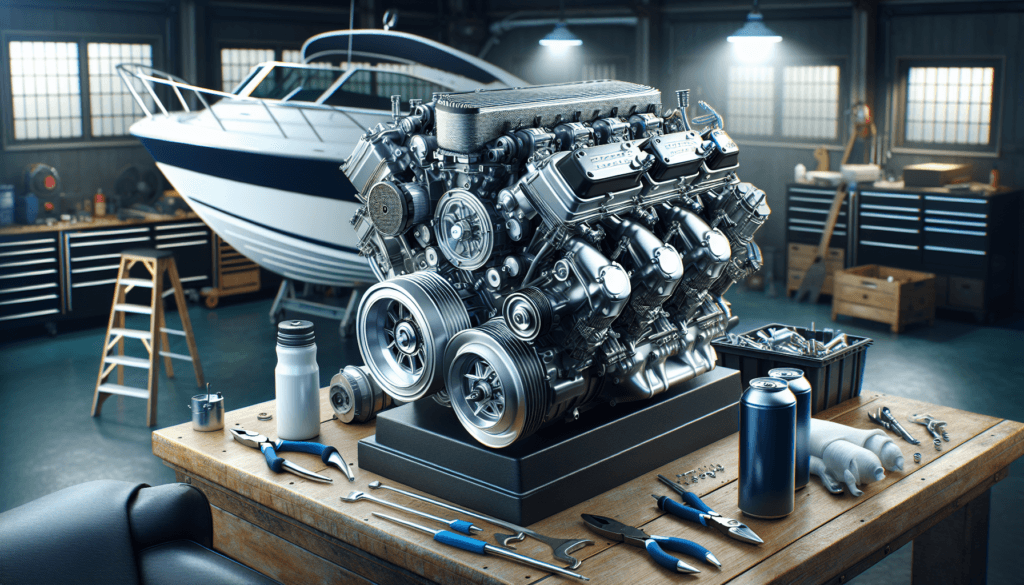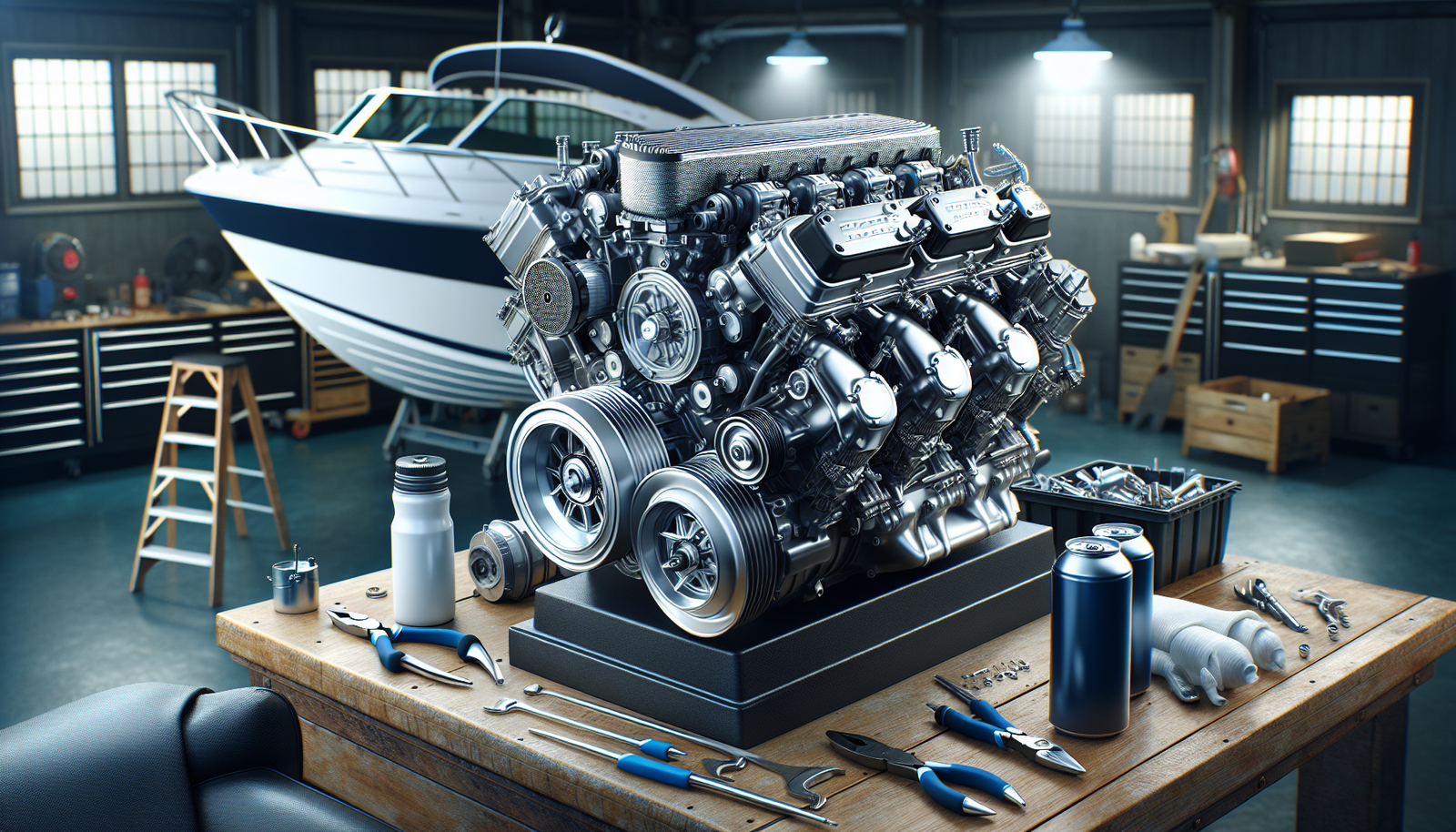Embarking on the journey of repowering your boat with a new engine is a significant decision. This task involves more than merely switching engines; it’s about enhancing your maritime experience. What you’re about to read is a blueprint of the most critical steps you should take in this process. The article discusses key factors such as understanding your boat’s needs in terms of power and performance, finding the right replacement engine that suits your boat, and ensuring proper installation and maintenance. It’s the roadmap to a successful repowering project that will bring a new lease of life to your vessel. So tighten your life jacket, you’re about to sail towards a smooth and efficient marine adventure.
Understanding the Need for Repowering
Repowering your boat is a significant investment, and it’s something not to be taken lightly. How do you know when it’s time for repower? There are a few key signs that can give you a heads-up that your current engine may be heading towards the end of its life.
Identifying the signs of engine failure
Pay attention to any changes in your engine’s performance. If you’re consistently dealing with mechanical errors, frequent breakdowns, or finding it hard to crank up, then these might be indications that your engine is towards the end of its lifespan. Increased fuel consumption or excessive smoke are other symptoms to look out for.
Evaluating the performance of the current engine
Check the performance of your engine during regular operation. Are you able to accelerate smoothly, or do you notice a dip in performance when trying to reach top speeds? An engine in good health should offer consistent delivery without any surprises.
Considering the age and overall condition of the boat
The age and overall condition of your boat play a major role in deciding whether to repower or not. If your boat is relatively young, a new engine can improve performance and overall lifespan. On the other hand, if your boat is older and has seen better days, the cost of repowering may outweigh the benefits.
Choosing the Right Engine
Once you’ve decided to repower, finding the right engine is crucial. Several factors can determine which engine is best suited for your boat and your needs.
Determining the right engine type
Should you opt for an inboard or outboard engine? The right type depends on your boating habits, the size of your boat, and personal preference. Inboard engines can be more efficient for larger boats, while outboards can offer better maneuverability.
Comparing horsepower requirements
You should consider horsepower requirements when selecting a new engine. This is influenced by the size of your boat, the typical water conditions you drive in, and how you plan to use your boat.
Considering the compatibility with your boat
Ensure that your chosen engine is compatible with your boat’s design and size. It’s also critical to review the engine’s weight and size to ensure it won’t unbalance your boat or need extensive modifications to fit.
Researching brands and manufacturers
The brand of the engine can make a significant difference in reliability, performance, and after-sale service. Make sure you do your homework on different brands, reliability scores, and customer testimonials.
Understanding the differences between petrol and diesel engines
Understanding the difference between gasoline and diesel engines is crucial when repowering. Petrol engines can be less expensive upfront, but diesel engines usually have a longer lifespan and better fuel economy.

Budgeting for the Repower
There’s no denying that repowering can be costly, but careful budgeting can help to make the investment more manageable.
Determining the cost of the new engine
The new engine constitutes a major chunk of the repower cost. Prices can vary significantly depending on the type, size, and brand of the engine.
Factoring in the cost of installation
Don’t forget to factor in the cost of installation—which can include labor costs, haul-out fees, and other miscellaneous expenses.
Considering the cost of any required boat modifications
Depending on the chosen engine, your boat may require modifications to accommodate it. This might include altering the engine room, strengthening mounts, or upgrading the fuel system.
Planning for future maintenance costs, fuel, and insurance
The associated costs don’t stop once the engine is installed. Consider the ongoing costs, such as routine maintenance, fuel, and insurance.
Preparing the Boat for Repower
Much like preparing a home for renovation, there’s work to do to ready your boat for the new engine.
Inspecting the current engine mount
Inspect the engine mount to ensure that it’s solid and rust-free. You may need to reinforce or replace it to support the new engine.
Examining the hull and propeller
The hull and propeller should also be reviewed. If they’re not in a good state, your new engine’s performance could be compromised.
Checking for any necessary electrical or fuel system upgrades
Upgrades to the electrical or fuel system might be necessary, depending on the new engine’s specifications.
Exploring potential structural changes needed
Structural changes could be involved, especially if the new engine is larger or heavier than the old one.

Removing the Old Engine
Once your boat is ready for the new engine, it’s time to remove the old one.
Disabling the electricity and fuel supply
Before the removal process, ensure safety by disabling the electricity and fuel supply.
Removing the engine components systematically
Engine removal is generally a systematic process of disconnecting attachments like components, cables, and hoses.
Disposing the old engine responsibly
After removing the engine, dispose of it responsibly since it might contain potentially harmful materials.
Installing the New Engine
With the old engine out of the way, you’re all set for installation of the new powerhouse.
Reviewing the engine manufactures installation guide
The engine manufacturer’s installation guide is your best friend at this stage. It provides important information on correct mounting and alignment, among other critical installation steps.
Proper engine alignment, mounting and fitting
Proper alignment of the new engine is crucial for smooth operation, while proper mounting and fitting ensure longevity.
Ensuring proper duckwork, venting and exhaust setup
Ensure all ductwork, ventilation, and exhaust systems are properly set up to prevent engine overheating and carbon monoxide accumulation.
Connecting the engine to the fuel and electric systems
Finally, the new engine is connected to the fuel and electric systems.
Inspecting the New Installation
With the new engine installed, it’s necessary to make some inspections before you can get back on the water.
Conducting a post-installation check
Conduct a post-installation check to make sure that everything is in place, and that there are no hurdles that could affect the engine’s operation.
Inspecting for leaks and proper mount
Make sure the engine is mounted properly and securely to the boat, and check for any leaks in the engine components or fuel and cooling systems.
Ensuring connections are secure and functional
Ensure all connections are not only secure but also functional. The fuel, electrical, and exhaust systems should all be working seamlessly.
Checking for emissions and noise
Your new engine should also be compliant with any regulations pertaining to emissions and noise, so make sure you’re running within legal limits.
Initial Testing and Calibration
When the installation inspections have been successfully completed, it’s time to perform initial testing and calibration.
Undergoing a dry run test
Perform a dry run test to ensure that the engine operates smoothly without a load.
Adjusting and calibrating the new engine
You might need to make adjustments or calibrations to fine-tune the engine’s performance.
Understanding the new engine controls and operations
Familiarize yourself with the new engine’s controls and operation to ensure you can navigate safely and effectively.
Checking the engine performance under various conditions and load
Test your new engine under a variety of conditions and loads to ensure it will perform reliably, no matter the circumstances.
Maintaining the New Engine
Just like your old engine, your new one will require regular maintenance to function at its best.
Understanding the engine maintenance schedule
Acquaint yourself with the engine’s maintenance schedule. This can be obtained from the engine manufacturer and should guide you on how to maintain peak performance.
Ensuring proper engine care
keeping the engine clean, using the recommended oil and fuel types, and being diligent about pre- and post-use checks are all part of the care package for engines.
Scheduling regular inspections and servicing
Make a schedule for regular professional inspections and servicing, which will help in identifying any issues that can be nipped in the bud.
Legal and Regulatory Considerations
The decision to repower also involves some legal and regulatory considerations.
Understanding maritime laws concerning engine replacement
Familiarize yourself with maritime laws regarding engine repower. This can save you numerous headaches down the line.
Ensuring environmental compliance
Environmental regulations can dictate the type, size, and emission standards of the engine you can install. Ensure your new engine meets any environmental requirements.
Acquiring necessary permits and registrations for the new engine
Finally, don’t forget to acquire any necessary permits and re-register your boat if needed.
Repowering your boat is an investment, but if done right, it can breathe new life into your vessel. Taking the time to understand the process, doing your research, and carefully planning can help you make the most of this significant upgrade. Remember, when you take care of your engine, it takes care of you. Happy boating!

